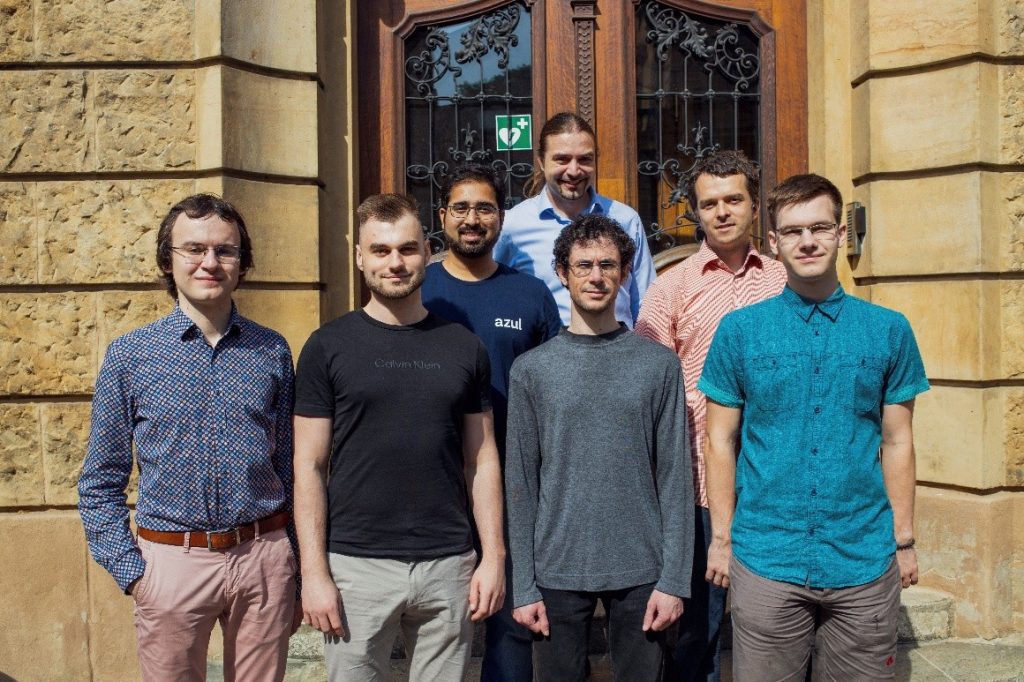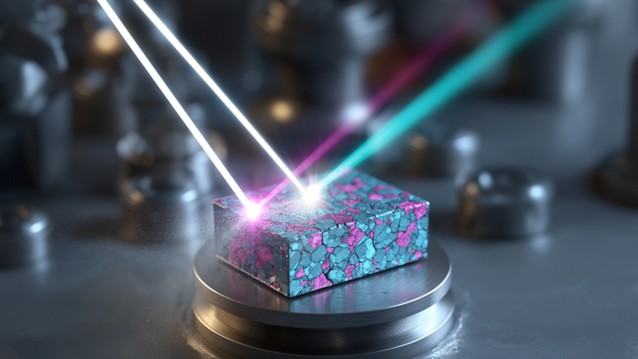Researchers show that circularly polarized resonant inelastic X-ray scattering can read the handedness of magnons in an altermagnet, providing a practical way to probe altermagnetic properties. The chiral behavior leaves a measurable, reversible, symmetry-tied contrast in the measured spectrum—an accessible fingerprint of magnon chirality. The research was funded by the Czech Science Foundation (GACR).
In a study published in Nature Communications, researchers report that magnons – the quanta of spin waves and the fundamental collective excitations of magnetic order – can exhibit “handedness,” or chirality, which leaves a distinct, reversible signature in the resonant inelastic X-ray spectrum of an altermagnet. While this is commonly observed when studying ferromagnetic materials (the ones found in fridge magnets, electric motors and wind turbines), for antiferromagnetic materials such signatures typically cancel. Recently, a new category of materials was identified, called altermagnets, that also shares aspects found in ferromagnetic materials and so opens new possibilities.
The Method
The team used a state-of-the-art measurement technique called resonant inelastic X-ray scattering (RIXS), comparing the response for right- and left-handed circularly polarized light while rotating the crystal. They observed a measurable circular dichroism, a difference in response, at the magnon feature that flips sign at opposite crystal momenta and follows a three-fold angular pattern as dictated by symmetry, together forming a robust fingerprint of chiral magnons in an altermagnet. The circular dichroism produces a significant intensity difference in the scattered signal. The sign and angular dependence of this difference reveal the handedness of the spin waves. “We have detected a clean fingerprint of chiral magnons. That makes magnon chirality an experimentally accessible probe to detect altermagnetic properties with a straightforward protocol,” said Petr Čermák of Charles University, who led the study.
Background of the Research
The path of this research has not always been straightforward. The researchers jumped into altermagnets as soon as they were proposed in 2022. “As a researcher specializing in neutron scattering, my first instinct was to study the magnon energy splitting using neutrons, as they are very sensitive to magnetic properties,” added the first author of the study, Nikolaos Biniskos. That path turned out to be difficult, and the first splitting was later detected in MnTe by a Japanese team (Physical Review Letters 133, 156702 (2024)).
CrSb, the compound studied here, became an especially attractive candidate: it is metallic, was among the first altermagnets identified, and maintains its magnetic order at room temperature. But that also means its magnon energy dispersion is very steep “making neutrons unlikely to detect the required features, as these measurements cannot be easily carried out at high energies,” explained Biniskos. In order to overcome these experimental challenges, he and his colleagues drafted a proposal for X-ray measurements at the Diamond Light Source.
They originally aimed to resolve the energy splitting. The experiment turned out to be straightforward to run – at room temperature, with no cryostat or magnetic field – on the I21 RIXS beamline, which offers both high energy and high spatial resolutions. A convenient surprise also helped. The magnetic domains in CrSb are large enough so the X-ray beam could move between them. To prove this, graduate student David Sviták invested hours scanning the sample to locate neighboring domains with opposite handedness, for which the dichroic signal reversed accordingly.
The Findings
The scientists conclude that the circular dichroism of the magnon peak reverses with the orientation of the Néel vector, which characterizes the magnetic ordering inside the material. Its characteristic angular dependence follows the theoretical predictions for chirality and energy splitting. Biniskos adds that “it’s a practical readout even when the two magnon branches are not individually resolved.”
Theoretical support came in parallel: Manuel dos Santos Dias performed the theoretical analysis at the STFC Daresbury Laboratory. Modelling shows that even if the two magnon modes blur together, their chirality still leaves a clearly observable fingerprint. The three-fold angular pattern follows the crystal symmetry. While MnTe allowed direct resolution of the magnon energy splitting, circularly polarized RIXS can instead distinguish nearly degenerate branches via opposite dichroic contrast, making them detectable even when the energy splitting is too small to resolve.
Only a handful of beamlines worldwide are capable of performing this type of measurement; in Europe, this capability is presently available at Diamond’s I21 beamline. The authors say the approach should be portable to other altermagnets and could help chart when and how chirality emerges in their spin-wave spectra. “It’s a simple protocol that other labs can adopt. A symmetry-aware magnon fingerprint complements electronic studies and opens a route to exploring chiral magnons across materials,” concludes Petr Čermák.

Research team
First image: X-ray beams strike two different magnetic domains in an image of a polished crystal; the reflected beams emerge with domain-dependent colours, illustrating the symmetry-related dichroic fingerprint measured in the study. Credit: Petr Čermák, Charles University
Further Information: Nikolaos Biniskos, Manuel dos Santos Dias, Stefano Agrestini, David Sviták, Ke-Jin Zhou, Jiří Pospíšil, Petr Čermák, “Systematic Mapping of Altermagnetic Magnons by Resonant Inelastic X-ray Circular Dichroism,” Nat Commun 16, 9311 (2025).
DOI: https://doi.org/10.1038/s41467-025-64322-0
Provided by: Charles University – the Faculty of Mathematics and Physics

